Curacao - Traditional Medicine

Kura Hulanda Museum, click here for more info.
When the slaves came to Curaçao, they smuggled seeds from their home villages into this Caribbean island. They believed their plants were critically important for their survival. The slaves didn't know where they were going, if they would have to grow their own food, or if they could find medicinal plants in their new location to cure their ills.
Many had come from rich West African kingdoms, proud civilizations that had thrived in Mother Africa. Even though the slaves endured unimaginable hardships, many of their old customs endured. So did their ancient knowledge of medicinal plants. But soon the people learned to unlock the secrets of Curaçao's native plants.
Today, the old wisdom about the medicinal plants is still practiced on Curaçao. However, like many islands throughout the Caribbean, Curaçao is modernizing. Most people here enjoy the conveniences of modern drugs, doctors, and medical facilities.
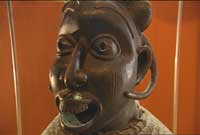
African mask

Medicinal plants are under attack from urbanization, industrial expansion and increased development
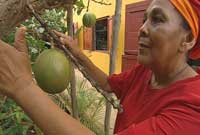
Dinah Veeris of Den Paradera
As the traditional healers approach the end of their lives, few young Curaçaoans are taking the time to learn their elders' secrets. The ancient knowledge of medicinal plants is being left behind. In addition, the wild places where these medicinal plants grow are under attack from urbanization, industrial expansion, and increased development. More people and more growth are beginning to tax the kanuku, Curaçao's fragile, arid countryside.
Today, Dinah Veeris of Den Paradera, is racing against time to save not only medicinal species, but also the traditional knowledge of how to use these plants as practiced by island elders.
Sister Carmen was one of the healers that Dinah Veeris chronicled in her book, Green Remedies & Golden Customs of Our Ancestors. One of her favorite herbs is Yerb'e Hole which she uses for a child with fever. She gives it to the child as a tea. Or sometimes she mashes it up, mixes it with coconut oil and then puts it on the feet or behind the ear. Cha Cha uses chamomile to cleanse the insides. She says Sangura is good for your stomach, especially if you drink a tea made from this herb every morning. It encourages a healthy appetite. But if you eat too much and have gas pains, Cha Cha recommends you drink a tea made from another herb, Mampuritu, to get rid of the gas.
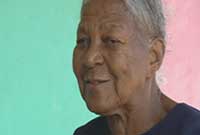
Sister Carmen
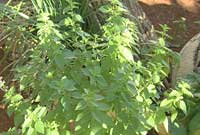
Yerb'e Hole
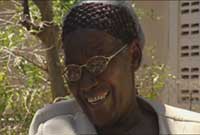
Cha Cha
Dinah Veeris of Den Paradera is known throughout Curaçao as a healer, or in the local language of Papiamento, a curioso. She takes plants home and makes blends of herbal medicine to sell. Her knowledge of the local botany is impressive and Dinah has published several books used by local scientists.
Dinah may use "lóki lóki" when people come to her with a headache. She says you can take little bits and put them around the head to lessen the headaches.
Dinah also treats gall bladder problems with "barba di kadushi", also called "de mari di palu". She mashes her selected plants and applies them to people's skin.
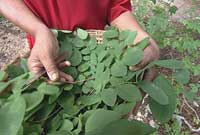
lóki lóki
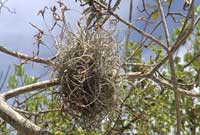
barba di kadushi
For more information about this website.
Contact the webmaster to report any problems with this site.
New Mexico State University is an equal opportunity/affirmative action employer and educator. NMSU and the U.S. Department of Agriculture cooperating.